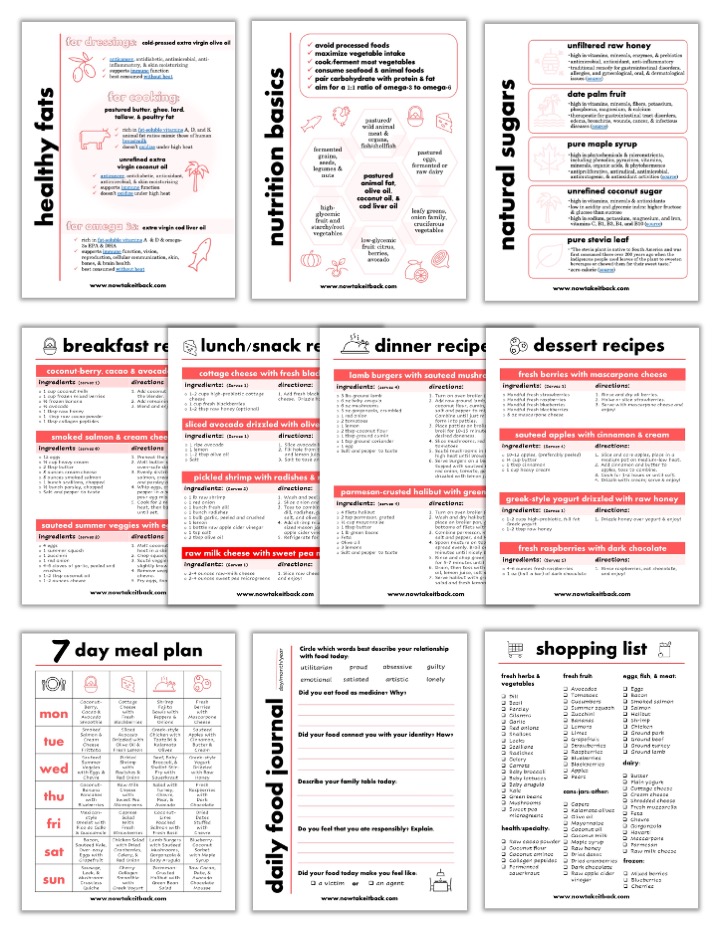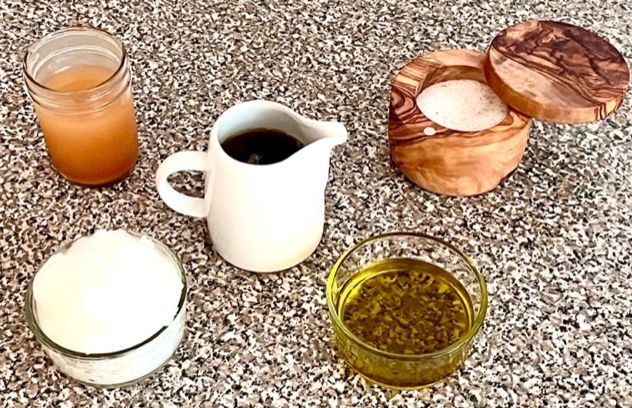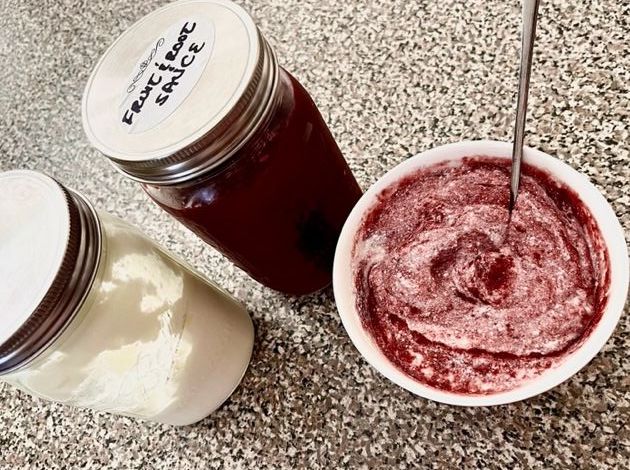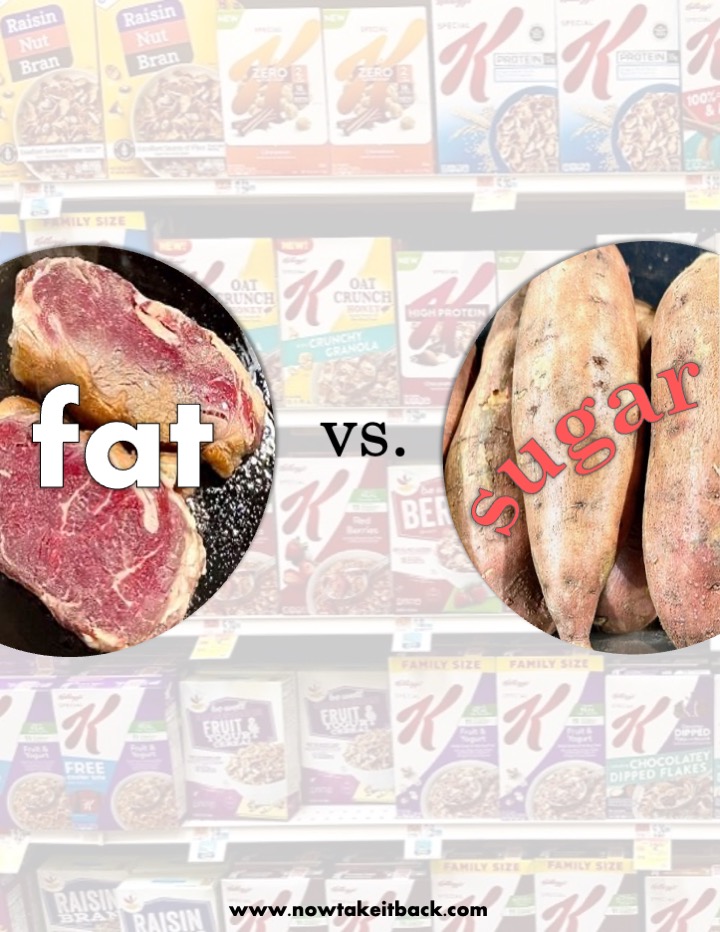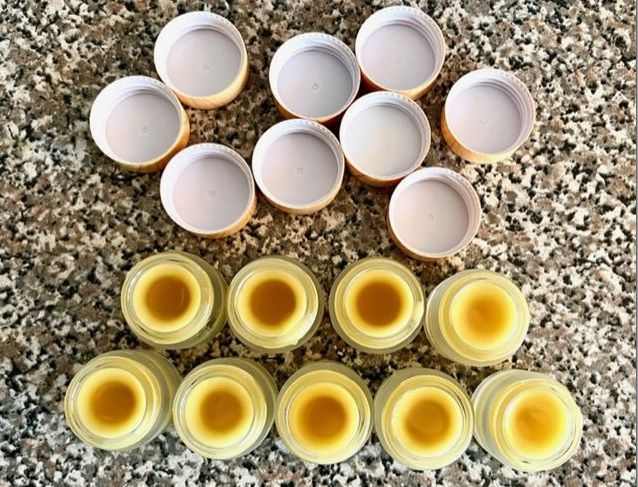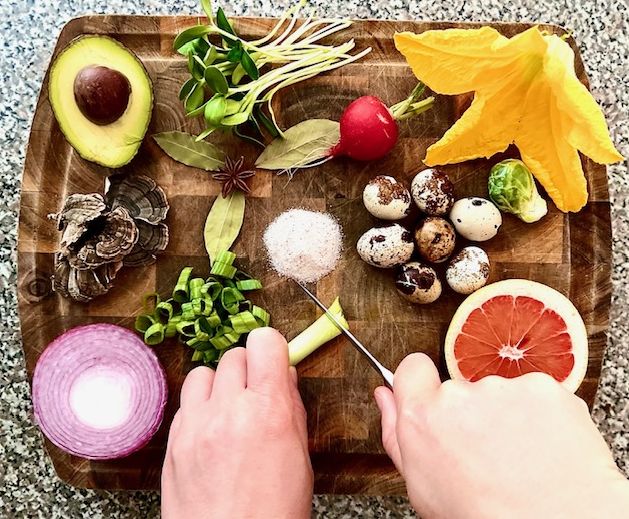Top 5 Pantry Essentials for a Real Food Kitchen
Aside from fresh produce and fresh animal protein, there are a few pantry staples that are critical to include in a comprehensive real food diet. These health-promoting foods go a long way towards making whole ingredients taste absolutely delicious.
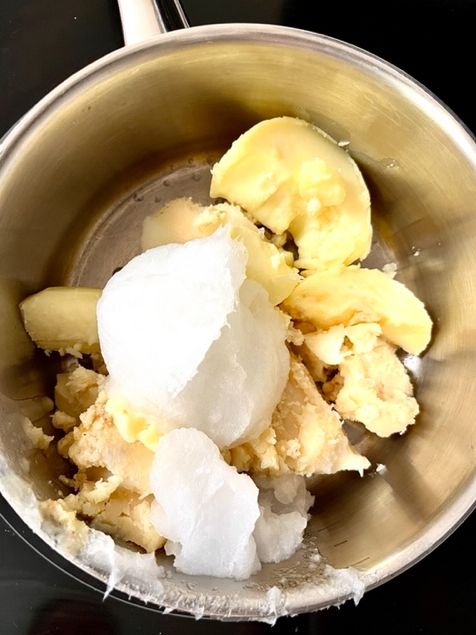
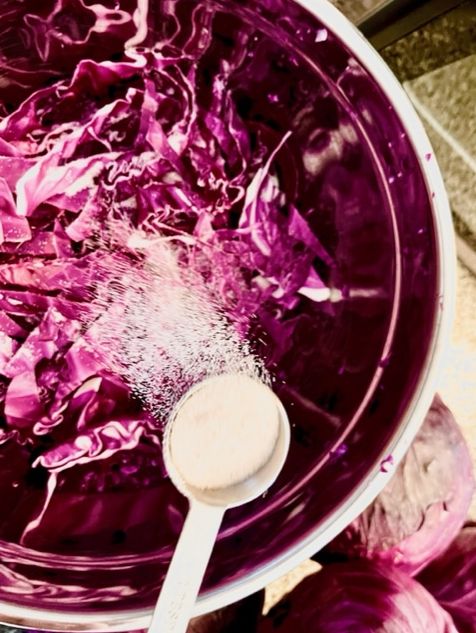
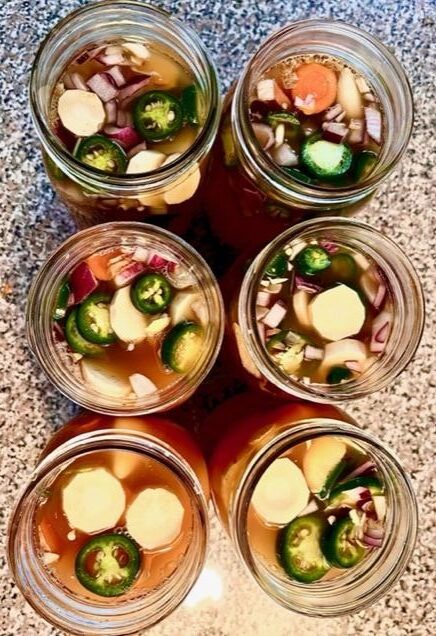
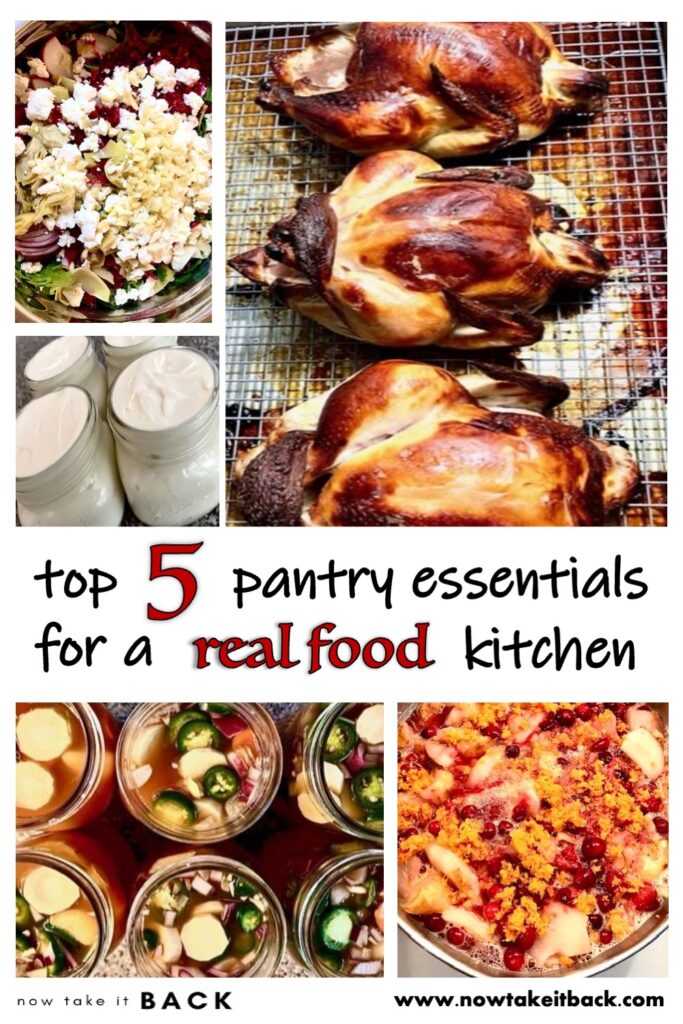
affiliate disclaimer: This post contains affiliate links. See my full affiliate disclosure for more information.

1. real salt
How often have you heard that you need to reduce your sodium intake? The reality is that salt is essential to human health. There exists little to no evidence behind consuming a low-sodium diet for the general population (i.e., those not on antihypertensive drugs). In fact, a low-sodium diet has been linked with insulin-resistance, suggesting a relationship between diabetes and our medical system’s current management of cardiovascular disease. Salt consumption is additionally necessary to maintain a healthy pregnancy, and there is no evidence to suggest a relationship between salt consumption and development of preeclampsia.
Much of the current dietary recommendations surrounding salt are a consequence of the high sodium content in processed foods created by the food industry. However, a real food (and processed-food-free) diet requires salting your food to taste and certain real food processing methods (such as fermentation and sprouting) require salt as a primary ingredient. See my recipes for Lacto-Fermented Red Sauerkraut, Buttermilk Roast Chickens, and Blood Orange & Dill Gravlax as examples.

The salt I use is Redmond’s Real Salt, which markets itself as “unrefined sea salt mined from an ancient seabed in Utah where it’s safe from modern pollutants. It’s pure, unprocessed, and full of trace minerals.”
pros:
- contains more than 60 trace minerals
- has undergone third-party elemental analysis
- is OMRI (Organic Materials Research Institute) certified
- is Kosher certified
- provides a material safety data sheet
cons:
- Because it’s unrefined, a small amount of silt/dirt can be seen at the bottom of your mug when you add it to broths or soups. Some people say they can feel the grittiness of the salt against their teeth while eating.
sourcing:
You can purchase Redmond Real Salt at your local health food store, on their website, or on Amazon. I typically buy it by the 25-lb bag to save money.

2. apple cider vinegar
Apple cider vinegar is both a delicious condiment and an excellent medicinal remedy for a variety of complaints. It has powerful antioxidant properties and has been found to be protective against a number of neurological diseases and renal impairment. Regular consumption of apple cider vinegar can decrease fasting plasma glucose and reduce the risk of obesity. It has antimicrobial and antibacterial properties, antifungal properties against some species of Candida, and has further been found to improve immune function.
I personally consume apple cider vinegar daily, either diluted in water or as a straight shot. I also consume it in the form of fire cider, which is apple cider vinegar infused with jalapeno, red onion, turmeric, garlic, ginger, and horseradish. Apple cider vinegar is my go-to for daily immune support but also for any digestive difficulty. I find that the acidity of apple cider vinegar has the effect of stimulating my digestive system’s actual production of stomach acid, thereby soothing any digestive upset by allowing my stomach to process its contents. Apple cider vinegar additionally soothes sore or irritated throats by cleansing and killing pathogenic bacteria in the throat and esophagus.
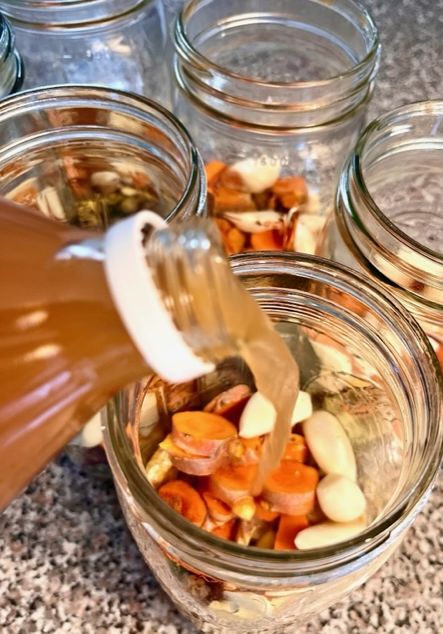
The pioneer in fermented apple cider vinegar containing the “mother” culture is a company called Braggs. They market their vinegar as raw, organic, unfiltered, unpasteurized, and containing the “mother” culture, acetic acid, prebiotics, and postbiotics.
pros:
- contains the “mother” culture, defined by Braggs as “a matrix of prebiotics, proteins, enzymes, minerals, polyphenols, vitamins and other compounds produced by friendly bacteria and unfiltered apple juice.”
- high in acetic acid, according to Braggs as key in “maintaining healthy weight levels, supporting healthy blood glucose levels, and supporting healthy cholesterol levels.”
- high in pre-and-postbiotics, that is, fuel for bacteria and results of fermentation, such as short chain fatty acids and functional proteins
- USDA-certified organic and raw (has not been chemically altered)
- Unfiltered and unpasteurized (the solids from the mother culture have not been filtered out and the product has not been heated, leaving the beneficial bacteria alive)
cons:
- Braggs has been around for awhile and can be very expensive. There are other brands of apple cider vinegar containing the mother culture that are less expensive.
sourcing:
You can purchase Bragg’s apple cider vinegar at your local health food store, on their website, or on Amazon.

3. extra virgin coconut oil
Coconut oil is a true superfood with hypocholesterolemic, anticancer, antihepatosteatotic (liver-protective), antidiabetic, antioxidant, anti-inflammatory, antimicrobial and skin moisturizing properties. Coconut oil has been used for its health properties in Ayurvedic medicine for approximately 4000 years. Oil pulling with coconut oil can improve dental hygiene and oral health, and coconut oil topical administration can improve skin health, especially in pediatric populations.
I use coconut oil in cooking, skin care, and detoxification regimens. Coconut oil is the only product I will use on babies under 6 months of age to soothe dry or irritated skin or diaper rash. I also use it to heal sore nipples in the first weeks of breastfeeding a newborn. I consider it the perfect oil for frying eggs and roasting vegetables as it can stand up to high levels of heat without oxidizing.
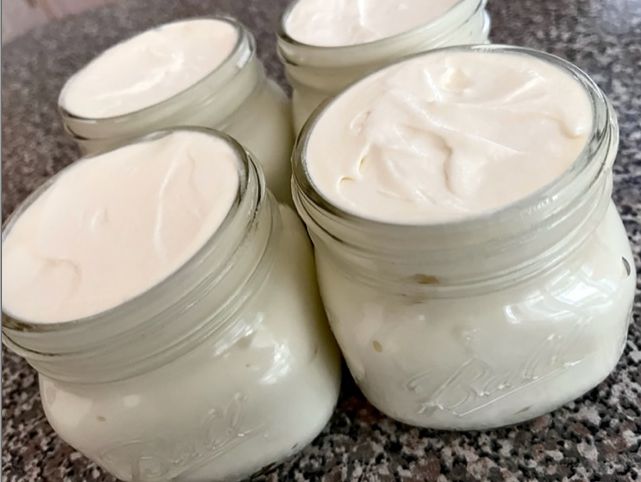
pros:
- rich source of medium-chain fatty acids
- acts as natural antibiotic and helps modulate immunity
- application or ingestion releases lauric acid and monolaurin (anti-microbial agents)
- antiviral, antibacterial and antifungal
- suppresses inflammatory markers and enhances skin barrier function
cons:
- Coconut oil has a distinctive taste, which pairs well with most cooking applications. However, if you are trying to use it in baking or some other context in which you do not want the coconut flavor, you can use refined coconut oil, which does not have the distinctive coconut taste. If choosing refined, you will lose some of the health benefits intact in extra virgin coconut oil.
sourcing:
I use coconut oil from a company called Terrasoul Superfoods, which packages their oil in glass to prevent plastic compounds from leaching into the oil. Terrasoul Superfoods extra virgin coconut oil is organic, cold-pressed, unrefined, and contains 63% medium chain triglycerides and 50% lauric acid. You can purchase Terrasoul coconut oil on their website or on Amazon. There are also plenty of other extra virgin coconut oil brands in glass containers that you can find at your local health food store.

4. extra virgin olive oil
The health properties of extra virgin olive oil are inextricably linked with the Mediterranean region to which the oil is native. Sardinia, Italy, was the first of the so-called “Blue Zones,” or the geographic regions where people seem to live the longest, healthiest lives. The Mediterranean diet is characterized by prevalent olive oil consumption. Olive oil contains mostly monounsaturated fatty acids such as oleic acid, but also contains tocopherols and polyphenols. It additionally contains neuroprotective agents and aids in the functioning of the mucosal immune system. It can help to balance or improve gut health and has been shown to be anti-carcinogenic and anti-tumor.
I use olive oil exclusively in dressings and occasionally in marinades. There seems to be mixed evidence regarding the safety of light cooking/frying with olive oil. Because olive oil is an unsaturated fat, it is more prone to oxidation than saturated fat; however, many cultures have historically cooked with olive oil without apparent issue. I personally try to avoid exposing olive oil to heat.
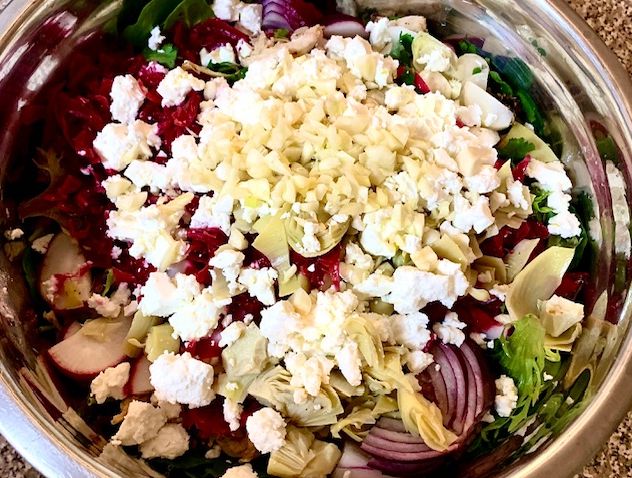
pros:
- associated with reduced risk of cardiovascular disease
- anti-inflammatory, antioxidant and vasodilatory
- anti-tumor and microbiota-modulation effects
- preventative against most metabolic diseases
- neuroprotective, can help enhance cognitive function
cons:
- Olive oil is dominantly monounsaturated and partially polyunsaturated fat, making it more prone to oxidation than saturated fat. It needs to be carefully stored in dark, glass bottles to protect it from heat, light, and air in order to preserve its health benefits.
sourcing:
I have previously been a member of the Fresh-Pressed Olive Oil Club, which sends fresh olive oils directly from harvests around the world multiple times per year. This ensures that the oil has not been sitting on supply store shelves oxidizing or going stale, thereby optimizing nutrition content. It is excellent olive oil, but also very expensive. You can find more affordable organic, cold-pressed olive oils at most grocery stores, health food stores, or on Amazon. Look for a bottle that is made of metal or glass, is dark in color, and protects the oil from air, light, and plastic compounds.
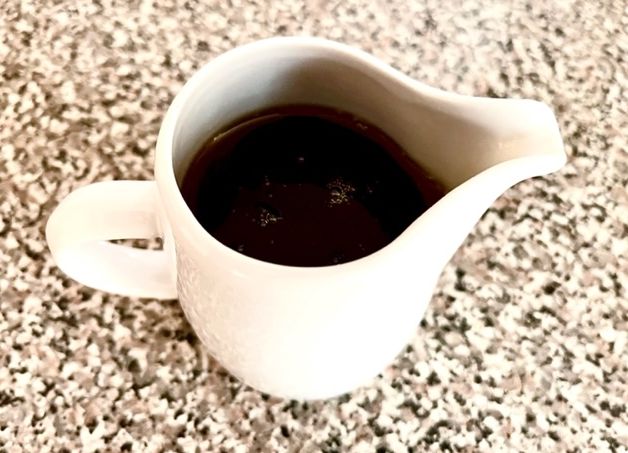
5. pure maple syrup
It would be nice if we could eliminate our craving for sweet things overnight, but it’s not that simple and is often a long process for most people. I find it necessary to be realistic with ourselves and maintain some sweet treats as part of our diet. After all, food is about more than nutrition. I like to set myself up for success by retaining some sweet recipes and ingredients in my home and try to incorporate them on special occasions.
Produced through boiling the sap from maple sugar trees, maple syrup has a high concentration of phenolic compounds, organic acids (malic acid), amino acids, and potassium, calcium, zinc and manganese. The dominant ingredient is sucrose; however, maple syrup also contains phenolics, pyrazines, vitamins, minerals, organic acids, and phytohormones. Pure maple syrup additionally demonstrates antiproliferative activity against cancer cells. Maple syrup further contains a recently discovered polyphenolic compound called quebecol, which has anti-inflammatory properties. The darker the color of maple syrup, the more autofluorescence, total phenol content, antioxidant potential, phosphorous, calcium and mineral content.
I use maple syrup as my primary sweetener in things like coffee and baking. Honey has incredible health properties, but heating raw honey can destroy many of its beneficial compounds. Maple syrup can retain its health benefits under high heat, making it an ideal sweetener for most baked goods or homemade jam recipes.
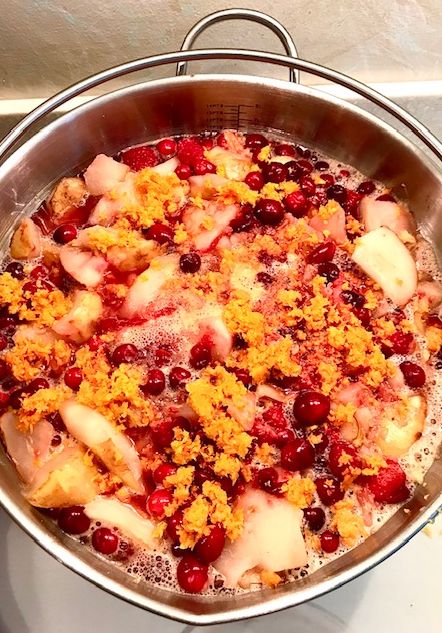
pros:
- antioxidant, antimicrobial, antimutagenic, anti-inflammatory, and antiproliferative
- higher in antioxidants than refined sugars
- darker maple syrup contains more beneficial compounds
- contains quebecol, which promotes oral health and skin health
- has been shown to inhibit colorectal cancer cell proliferation
cons:
- Despite its health properties, maple syrup is still dominantly composed of sucrose, which is sugar. It therefore needs to be used sparingly.
sourcing:
Maple syrup is expensive and heavy. If you want to buy it in glass (and I try to buy all oils, vinegars, and liquid substances in glass), you need to buy in bulk or pay for shipping. I order this 64 oz glass jug of Maple Valley’s dark maple syrup from Amazon, but Maple Valley has smaller glass products for free shipping on Amazon as well. Finally, if you do a lot of baking or prefer a subscription service, Runamok Maple has a subscription service worth exploring.
dive deeper
We use mineral salt, apple cider vinegar, coconut oil, olive oil, and maple syrup every day in our home. If you’re interested in using 1 or more of the above ingredients to improve your family’s health or nutrition, consider taking my free 5-day challenge!
take my free 5-day challenge
& instantly access:
